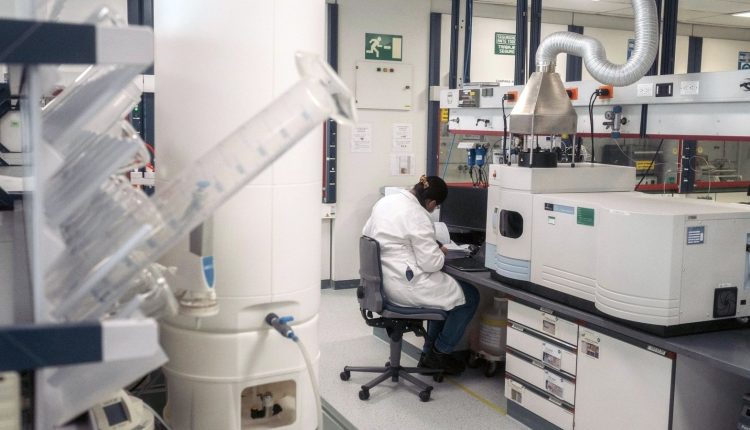Scientists have uncovered why certain parts of the brain are particularly vulnerable to Alzheimer’s damage. It comes down to the gene APOE, the greatest genetic risk factor for the disease.
According to researchers from Washington University, the parts of the brain where APOE is most active are the areas that sustain the most damage.
Also Read| Researchers examine role of copper-binding proteins in cancer cells
Everyone carries some version of the APOE gene, but people who carry the APOE4 variant are up to 12 times more likely to develop Alzheimer’s disease than the general population, and at a younger age, they said.
The findings of the study, published in the journal Science Translational Medicine, helped explain why symptoms of Alzheimer’s disease sometimes vary and highlighted an understudied aspect of Alzheimer’s disease that suggests that yet-to-be-discovered biological mechanisms may play an important role in the disease.
Typical patterns of worsening damage to brain tissues often begin with memory loss, followed by confusion and difficulty in thinking. Toxic clusters of proteins first concentrate in the memory area before spreading to parts of the brain important for thinking and planning.
However, as senior author of the study Brian A. Gordon said there are some rare and atypical forms of Alzheimer’s in which people first develop language or vision problems rather than memory problems.
“When you scan their brains, you see damage to the language or the visual areas and not so much to the memory areas. People with atypical Alzheimer’s are often screened out of research studies because it’s easier to study a group where everyone has the same set of symptoms.
“But this heterogeneity tells us that there are things we still don’t understand about how and why Alzheimer’s develops the way it does. There’s a reason why certain brain areas become damaged and not others, and we don’t know that reason yet,” Gordon said.
Alzheimer’s disease begins with a brain protein known as amyloid beta. The protein starts building up into plaques two decades or more before people show the first signs of neurological problems.
After years of amyloid accumulation, tangles of tau – another brain protein – begin to form. Soon after, tissues in the affected areas begin to wither and die, and cognitive decline sets in.
To understand why Alzheimer’s brain damage occurs where it does, Gordon and colleagues studied 350 people who volunteered for memory and ageing studies through the School of Medicine’s Charles F. and Joanne Knight Alzheimer’s Disease Research Center.
The participants underwent brain scans so the researchers could measure the amount and location of amyloid plaques and tau tangles, and the volumes of various brain areas, the study said.
The researchers compared the patterns of protein clumps and tissue damage in the volunteers to the gene expression patterns of APOE and other genes associated with Alzheimer’s disease as depicted in the Allen Human Brain Atlas, a detailed map of gene expression in the human brain compiled by the Allen Institute for Brain Sciences.
“There was a close match between where you see high APOE expression, and where you see tau tangles and tissue damage,” Gordon said.
“And not just APOE. If you look at, say, the top 20 genes associated with Alzheimer’s disease, they are all expressed in the temporal lobes in similar patterns. There’s something fundamentally different about these regions that make them vulnerable to Alzheimer’s brain damage, and that difference is probably baked in from birth and influenced by a person’s genetics.”
Alzheimer’s researchers have long known that APOE4 increases the accumulation of amyloid beta in people’s brains. Studying mice that develop tau tangles but not amyloid plaques, David Holtzman and colleagues showed that APOE4 also increases damage due to tau, even without an amyloid present.
To assess the effect of the high-risk variant of APOE on tau-related brain damage in people, the researchers classified each participant as carrying the high-risk variant or not and analyzed the protein clusters and atrophy in their brains.
“APOE4 carriers are more likely to start accumulating amyloid, which puts them on the path to Alzheimer’s,” Gordon said. “Then, for the same amount of amyloid they get more tau tangles, which leads to more atrophy. It’s a double hit on the brain.”
Atrophy refers to weakening or degeneration, especially through lack of use.
In future works, Gordon and colleagues plan to explore how patterns of gene expression relate to patterns of tau damage in people with atypical Alzheimer’s.
“When we see someone who presents with vision problems, is there a specific genetic signature that corresponds to the areas that are damaged in the brain? We want to know why some people have these altered patterns and what it means about how Alzheimer’s disease develops and how it can be treated,” Gordon said. PTI KRS KRS NSD KRS


